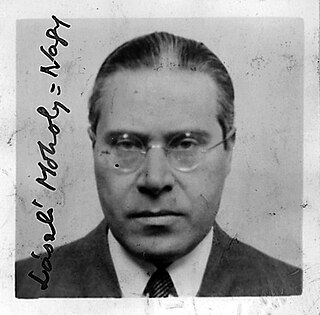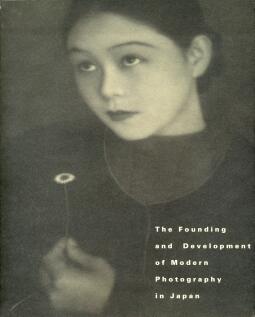Katsuji Fukuda(福田 勝治Fukuda Katsuji, 1899–1991) was a Japanese photographer known for his photographs of still lifes and nudes, and also a writer of practical books about photography. [1]

Japanese people are a nation and an ethnic group that is native to Japan and makes up 98.5% of the total population of the country. Worldwide, approximately 129 million people are of Japanese descent; of these, approximately 125 million are residents of Japan. People of Japanese ancestry who live outside Japan are referred to as nikkeijin(日系人), the Japanese diaspora. The term ethnic Japanese is often used to refer to Japanese people, specifically Yamato people. Japanese are one of the largest ethnic groups in the world.

A photographer is a person who makes photographs.
Contents
Fukuda was born on 11 January 1899 in Nakanoseki (later part of Hōfu), Yamaguchi (Japan). He moved to Tokyo in 1920, and worked at Takachiho Seisakujo (later renamed Olympus), where he worked making thermometers and developed an interest in photography, buying a Vest Pocket Kodak. The 1923 Kantō earthquake impelled him to leave the company and move to Kansai.

Yamaguchi Prefecture is a prefecture of Japan in the Chūgoku region of the main island of Honshu. The capital is the city of Yamaguchi, in the center of the prefecture. The largest city, however, is Shimonoseki.
Olympus Corporation is a Japanese manufacturer of optics and reprography products. Olympus was established on 12 October 1919, initially specializing in microscopes and thermometers. Olympus holds roughly a 70-percent share of the global endoscope market, estimated to be worth approximately US$2.5 billion. Its global headquarters are located in Shinjuku, Tokyo, Japan.

The Great Kantō earthquake struck the Kantō Plain on the Japanese main island of Honshū at 11:58:44 JST on Saturday, September 1, 1923. Varied accounts indicate the duration of the earthquake was between four and ten minutes.
Fukuda ran a photographic studio in Sakai and Osaka, but this failed. He then worked as an editorial assistant on Hakuyō Fuchikami's periodical Hakuyō. A photograph he took in 1925, shown in an exhibition (titled 日本写真美術展覧会, Nihon Shashin Bijutsutenrankai) at Daimaru department store (Osaka) and elsewhere, won the Ilford Diamond Prize the following year. Fukuda then worked as a commercial photographer in Sakai and Hiroshima.

Osaka is a designated city in the Kansai region of Japan. It is the capital city of Osaka Prefecture and the largest component of the Keihanshin Metropolitan Area, the second largest metropolitan area in Japan and among the largest in the world with over 19 million inhabitants. Osaka will host Expo 2025. The current mayor of Osaka is Ichiro Matsui.
Hakuyō Fuchikami was one of the most prominent Japanese photographers in the first half of the 20th century.
Daimaru (大丸) is a Japanese department store chain, principally located in the Kansai region of Japan. The chain is operated by Daimaru Matsuzakaya Department Stores, a subsidiary of J. Front Retailing. At one time Daimaru was an independent company, The Daimaru, Inc. (株式会社大丸), headquartered in Chūō-ku, Osaka.
Fukuda moved back to Tokyo in 1933, where, influenced by Modernist trends from Europe (particularly Moholy-Nagy), he pursued a successful career as an advertising photographer. (Other than for a year at Hōfu toward the end of the war, Fukuda stayed in Tokyo for the rest of his life.) A series of photographs in Asahi Camera starting in 1936 and including portraits of Setsuko Hara and Takako Irie was very popular, and the next year Fukuda turned this into a book on photographing women that became a best-seller.

Modernism is a philosophical movement that, along with cultural trends and changes, arose from wide-scale and far-reaching transformations in Western society during the late 19th and early 20th centuries. Among the factors that shaped modernism were the development of modern industrial societies and the rapid growth of cities, followed then by reactions of horror to World War I. Modernism also rejected the certainty of Enlightenment thinking, and many modernists rejected religious belief.

László Moholy-Nagy was a Hungarian painter and photographer as well as a professor in the Bauhaus school. He was highly influenced by constructivism and a strong advocate of the integration of technology and industry into the arts. A New York Times article called him "relentlessly experimental" because of his pioneering work in painting, drawing, photography, collage, sculpture, film, theater, and writing.
Asahi Camera is a Japanese monthly photographic magazine.
After the war, Fukuda published collections of nude studies and more books on photographic technique. He also experimented with color. [2] The value he placed on the expression of beauty rendered his work old fashioned with the postwar wave of realism led by photographers such as Ken Domon, [3] and the trends that followed this. In 1974 he was not even among one hundred living photographers profiled in a Camera Mainichi supplement. [4] However, he contributed one volume (Shōka / Psalm) to the popular series "Sonorama Shashin Sensho" in 1979; in an afterword to this, Akira Hasegawa writes:

Ken Domon is one of the most renowned Japanese photographers of the 20th century. He is most celebrated as a photojournalist, though he may have been most prolific as a photographer of Buddhist temples and statuary.
Camera Mainichi is a Japanese monthly magazine of photography that started in June 1954 and ceased publication in April 1985. The Mainichi Press was the founding company. Robert Capa was instrumental in the establishment of the magazine.
There are no photographers of women in Japan even today who have not been influenced by Fukuda in one way or another. Many techniques commonly used today were developed by Fukuda, a fact which has been forgotten.
Fukuda continued working in his old age. He died on 26 December 1991. The estimation of his work has since increased, and it is often anthologized in collections of Modernist and mid-century works. A major exhibition of his work was held in the Yamaguchi Prefectural Museum of Art in 1994.
Yamaguchi Prefectural Museum of Art, in Yamaguchi City is the main art gallery of Yamaguchi Prefecture, Japan.
Works by Fukuda are in the permanent collections of the National Museum of Modern Art, Tokyo, Yokohama Museum of Art, and Yamaguchi Prefectural Museum of Art. [5]



